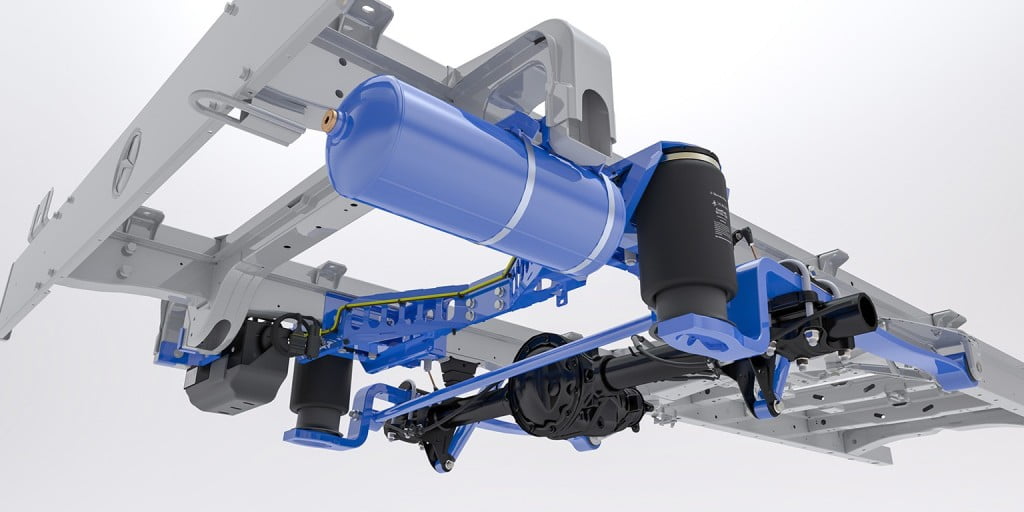We are back with another very prominent theme in automobile engineering and one that you experience in your day-to-day driving. In this edition of Automobile Technology Content, we shall discuss the Air Suspension and the differences between soft and stiff springs used in any suspension setup. As always, we will try to explain the technical aspects of engineering in easy-to-understand language so that everyone is able to follow. You must have heard about the terms soft and stiff springs while describing your suspension system. But what are the benefits and drawbacks of using either of the two, is something that we shall discuss in detail. But before we move on, make sure to check out Car Blog India for all the latest news related to the automobile world as well as the Automobile Technology Section for all the concepts and engineering aspects of automobiles in simple language.
Also read: Types of Engine Layouts – Inline, V, VR, Rotary and more!
Need for a Suspension System
The suspension system is one of the main components in an automobile that maintains the distance between the road and the vehicle apart from the tyres. Naturally, it plays a significant role in determining the dynamics of any car. Not only that, but it is the component that is responsible for the comfort of the passengers. It determines how many bumps will enter the cabin of the car or how severe the jerk would feel to the passengers. Also, it determines how stable the car will be around the corners and controls the body roll or the vertical movement as well. Depending on the requirements, there are various kinds of suspension systems out there. We have already discussed the basic suspension setups in one of our previous articles. In this article, we are primarily going to focus our attention on Air Suspension and the types of springs in a suspension system. So, let us dive straight into it.
Also read: What are Intercoolers? What are their types and functions?

Air Suspension
As the name suggests, this suspension setup uses air as a medium in some form to function. The air suspension has no metallic springs to absorb the bumps and undulations on the road. Instead, in fact, it has a membrane that is filled with air to act as the bump absorber. This is really fascinating as it requires additional components for its working. The components include an air reservoir, air pumps, air springs, air compressor and additional piping for the pneumatic setup among other things. The purpose of the springs is to absorb the energy as a result of the collision of the tyres against the bump on the road. This energy has to be dissipated as well to maintain stability. This is done by the dampers which are common in every kind of suspension system. In Air Suspension, the only difference is the air springs which are filled by the compressed air depending on the intensity of the jerk experienced by the tyres.
Also read: What is Engine Braking? How does the cooling system work?
The air compressor compresses the air and stores it in the reservoir which is directly connected to the air springs at each tyre. This makes the system an independent suspension setup. Depending on the intensity of the undulation on the road or tilting of the vehicle around the corner due to high speed, the exact amount of air fills the air springs and the shock is absorbed efficiently. Another feature of this kind of suspension system is that the ride height of the car can be altered according to the need. This, in itself, has a ton of benefits including easier ingress/egress, stability while driving, constant ride height irrespective of the load inside the car and cushier ride quality. This controlled using the height sensors in the car which tells the system how much lower the car is due to the load and that amount of pressure is released into the air spring to counter that. The downsides are that this system is very expensive and difficult to maintain and repair.
Also read: Regular Fuel vs Premium Fuel – Should you use premium fuel in your car?
Soft vs Stiff Springs
As mentioned earlier, springs are the mechanical connection of the cars to the roads. Springs are the actual point of contact of the vehicle to the ground after the tyres. Whatever the road conditions, they absorb the undulations on the road directly and convert them into potential energy. This potential energy is dissipated by the dampers and the car remains stable at all times. Without the dampers, the springs will make the car bounce up and down without stopping because of the constant motion of the vehicle. The difference, however, between various cars is the type of springs used. Some cars use soft springs and some use stiff springs for the suspension system. What could be the reasons for that?
Also read: What is Engine Knock? What are its consequences? How to prevent it?
A soft spring means that the spring rate is low. This translates into more force acting on the tyre when there is a bump on the road. A softer spring will make sure that the tyre retains the desired position quickly and remains on the ground. The travel in the spring is also more which allows for more area of contact to the ground even over large depressions on the road. On the other hand, if the springs are stiff, it means that the spring travel is less. The spring rate is higher and the car will take more time to bring the tyre on the ground after hitting a depression.
Also read: What are Catalytic Converters? How do they control pollution?
Advantages and Disadvantages
There are various advantages and disadvantages of using both these springs in a car. The advantages of the soft springs are better to ride quality since it absorbs all the irregularities on the road quite effectively. But the disadvantage is that the body roll around the corners is noticeable due to higher springs travel. Conversely, the advantages of the stiff springs include better handling characteristics of the car due to higher spring rate and stability around the corners helps keep the car planted and inspire performance-oriented driving. The disadvantage is poor ride quality and one will notice the thuds coming into the cabin even on smaller irregular patches on the road. Generally, the carmakers reach a balanced point between how soft or stiff the springs should be to be able to offer good driving capabilities along with a comfortable ride for the passengers.
Also read: Types of Ignition – Spark, Compression, HCCI, SPCCI Ignition!
Applications
The cars that we use for our day-to-day commute will mainly have a relatively softer suspension setup because the priority lies in the comfort of the passengers. Softer springs make sure that the bumps in the city conditions are taken care of and remain outside the cabin. Therefore, all our regular and luxury-oriented cars are examples of soft spring suspension setup. On the other hand, if the car manufacturer claims that a particular car is performance-oriented and driving dynamics are the strong points of a car, it will definitely have the stiffer springs in its suspension system because the priority remains on the thrilling driving experience. The stability around the corners can not be compromised and should inspire confidence for the driver. All the performance and track-oriented cars are examples of stiff suspension setup.
Also read: Variable Valve Lift and Timing – How do these affect efficiency and fuel economy?
Image Source: LinkedIn


